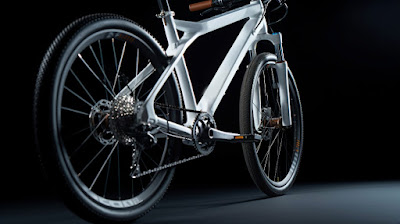Composites in Urban transport
The coiled cylindrical structures form tubes when joined end to end diametrically. When fibers of carbon are embedded in resin, it form a composite of carbon fiber tubes. They are known for their exceptional strength-to-weight ratio and high stiffness and durability. With technological advancements, the improvement of materials for a sustainable environment is increasing day by day. Carbon fiber tubes have grabbed attention in this regard. They are widely used in aerospace, automotive, sports equipment, grid infrastructures, and medical instruments. Carbon fiber tubes are manufactured by pultrusion, roll-wrapping, or filament winding. Continuous carbon fiber filaments are winded around a mandrel in filament winding. This creates a uniform structure. In pultrusion, resin-impregnated carbon fibers are pulled through a die. Each process has its attributes. The choice of manufacturing process depends upon the specific application.
Carbon fiber products are being used, from aerospace components to sports equipment. Carbon fiber tubes, sheets, and rods are seeking attention to achieve a combination of properties. It is a material of choice for cutting-edge products due to its versatility and strength. It is used in aircraft structures to reduce weight and enhance fuel efficiency. The automotive sector utilizes its lightweight body parts to improve performance and fuel economy. It is also used in the medical field in prosthetics and orthopedic devices.
Roll-wrapped carbon fiber tubes are commonly used for lightweight and high-strength applications. The carbon fibers and resin prepreg are wrapped around a mandrel. Vacuum bags are used to remove air and ensure uniform resin distribution. It is then cured by applying heat and pressure. The cylindrical mold or mandrel is removed to obtain hollow tubes. Multiple layers can be obtained to achieve the required wall thickness of the tube. Fiber orientation control makes them versatile for various engineering applications. They are typically used where specific strength and flexibility are crucial. Bicycle frames and fishing rods have roll wrapped carbon fiber tubes. It is also used to manufacture bridges and poles to provide structural integrity.
The movement of people or goods within a city or metropolitan area is referred to as urban transport. Its goal is to facilitate efficient movement in densely populated areas. Various components of vehicles in urban transport are being constructed from composites. Composites, a combination of high-strength fibers and a lightweight matrix, offer a high strength-to-weight ratio and other properties. They are compelling alternatives to traditional urban transport materials such as steel and aluminum. The role of composites in urban transport is described here:
Material Excellence:
Composites have a high strength-to-weight ratio. This property of composite materials grabs attention while selecting materials for various applications. Light-weight composite materials are used to design components of vehicles such as car body panels and chassis. The overall weight is reduced, which consumes less fuel and reduces environmental impact.
Fuel Efficiency:
Fuel consumption is a major concern in urban areas where stop-and-go traffic is common. Light-weight vehicles require less energy to operate. It has been observed that vehicles having components made up of composite materials experience a noticeable percentage decrease in fuel consumption as compared to vehicles having components made up of traditional materials. Less energy is needed for acceleration and retardation. The lightweight composite materials reduce emissions, improve fuel economy, and contribute to a sustainable urban transport system.
Reduction in Emission:
The composite materials are lightweight in nature. This property helps to make lightweight vehicle components, ultimately reducing the vehicle's weight. Weight reduction is linked with an increase in fuel efficiency and emission reduction. Fewer greenhouse gases are emitted into the environment, reducing carbon footprints and benefit air quality and more sustainable urban transport system is constructed by using composites according to modern trends.
Noise Reduction:
Composites offer better-damping properties than traditional metals such as aluminum or steel. They can absorb vibrations and minimize sound transmission, which leads to a quieter urban transport system. It benefits both the pedestrians and the passengers. Modern vehicles aim to provide comfortable rides by absorbing and attenuating noise. Composite materials are useful for such vehicles to reduce noise pollution without compromising structural integrity.
Design Flexibility:
Intricate shapes and structures that cannot be formed with traditional materials, can be manufactured by composite materials. The flexibility of composite materials enables innovative vehicle designs tailored according to urban environment and sustainability goals. Design flexibility enhances urban transport efficiency and decreases energy requirements while maintaining the structural integrity of urban transport vehicles.


Comments
Post a Comment